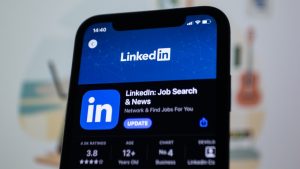Most people believe Bitcoin was the first cryptocurrency, but there were actually several attempts at establishing a cryptocurrency that go as far back as 1983 – they just didn’t take off. Bitcoin was the first to establish roots. Currently, there are over 8,000 active cryptocurrencies.
In September, the Louisiana State Treasurer announced that the state’s government would now be accepting Bitcoin as a valid form of payment. They aren’t the only state to embrace cryptocurrency. With cryptocurrencies becoming more common, it is important for business journalists to have a basic understanding of how they work, starting with mining. Since Bitcoin is the oldest established cryptocurrency, we will focus on it specifically as an example, but much of how it works can be translated to other popular cryptocurrencies as well.
How the heck is digital currency mined?
Instead of using a pick in the ground, bitcoins are mined using computers. This digital version of mining uses massive amounts of computing power to guess the random number generated by an algorithm set by the network. Whoever guesses the correct number, called a “hash,” wins the right to add an authenticated “block” of bitcoin to the currency’s digital ledger of transactions – and to their own digital wallet. Consider the Bitcoin block a reward for a job well done, just like finding a nugget of gold after digging through lots of dirt and rock.
The network is set to mine a new block around every ten minutes and adjusts the difficulty based on the number of miners to ensure the rate stays consistent. Therefore, as more people get into Bitcoin mining, the harder it is and more computer power is required for someone to mine the next one. In 2009, you could use a home computer to mine a block using barely any electricity, as many early adopters did. Today you need hundreds of highly specialized machines consuming electricity equivalent to that used by 61 homes to achieve the same result. As explained by The New York Times in 2021, Bitcoin mining now uses more electricity than many countries.
Can mining go on forever?
Short answer – no. Similar to mining for real materials, there is a finite amount of bitcoins available to be mined – 21 million to be exact. There are currently 19.1 million bitcoins already mined, and even though a new block is added every ten minutes, the number of bitcoins in that block is cut in half every 210,000 blocks. In 2009, if you mined a block of Bitcoin you would be rewarded 50 bitcoins, today you would be rewarded 3.125 bitcoins. The last bitcoin is estimated to be mined in 2140.
The only way left to get your hands on Bitcoin will be to purchase it, and considering the current cost of mining a block today, that is the only way for many buyers to get their hands on the cryptocurrency. That brings us to the blockchain.
Getting started on the blockchain
The Bitcoin blockchain is essentially a shared public ledger consisting of all the “blocks” added by miners. All transactions are recorded in real-time for anyone to see and each block is “chained” to all its predecessors – hence the name “blockchain.” This method ensures transparency on all transactions but can keep users anonymous. Not all cryptocurrency uses the same kind of blockchain as Bitcoin, there are varying types. Although blockchain technology really started with Bitcoin, it is already being used outside the crypto world.
For example, financial markets and brokerages throughout the world have experimented with using a Bitcoin-style blockchain to replace traditional centralized clearing systems (with mixed results). Even some non-financial entities are experimenting with blockchain technology to do things such as improve food safety and the global supply chain. The California Department of Motor Vehicles has also used the technology to start replicating its title database, allowing car owners to hold their car titles in a digital wallet. The agency hopes the technology will help “detect fraud and smoothen the title transfer process.”






